2012 London Olympic Torch Route: Week 4 Sights

2012 London Olympics torch run
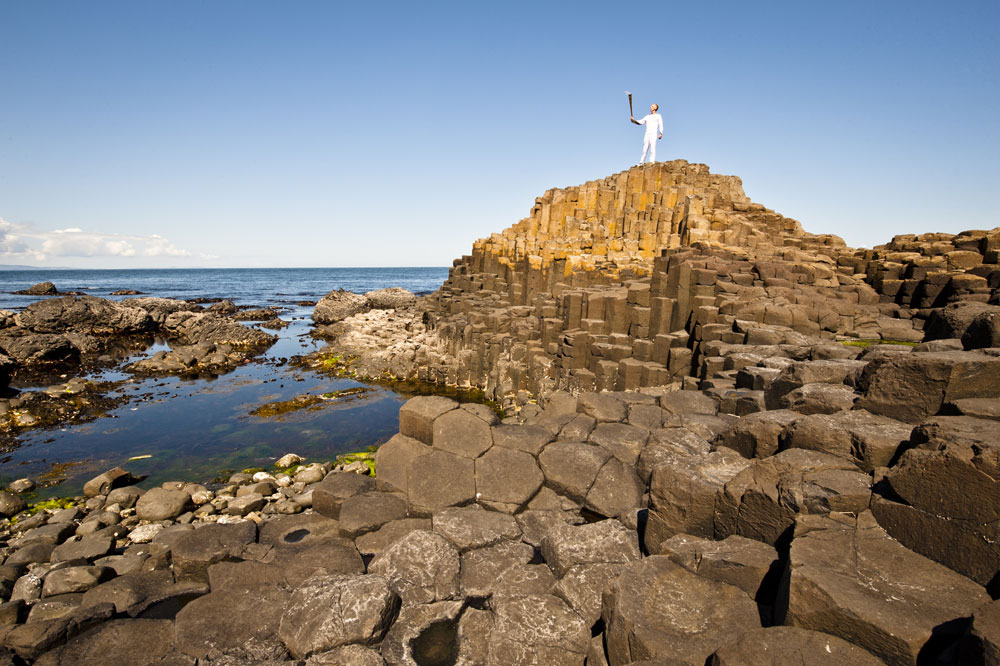
The 2012 London Olympics torch run has visited Cornwall, Wales, and Northern Ireland, as well as a few English towns and cities. Now, in its fourth week, the relay winds its way through Scotland, from Glasgow to the remote Shetland Islands, Edinburgh to Aberdeen.
OurAmazingPlanet will be taking you on a sight-seeing journey along with the torch week-by-week until the beginning of the Games of the XXX Olympiad, which runs from July 27 through Aug. 12, 2012. Here, we travel along the route for week 4 and see some of the most amazing sites that Scotland has to offer. Make sure to come back to see where the torch goes next!
(See sights along the torch route from last week. Pictured above is the torch held aloft at the Giant's Causeway in Northern Ireland on Day 17.)
Antonine Wall Day 22
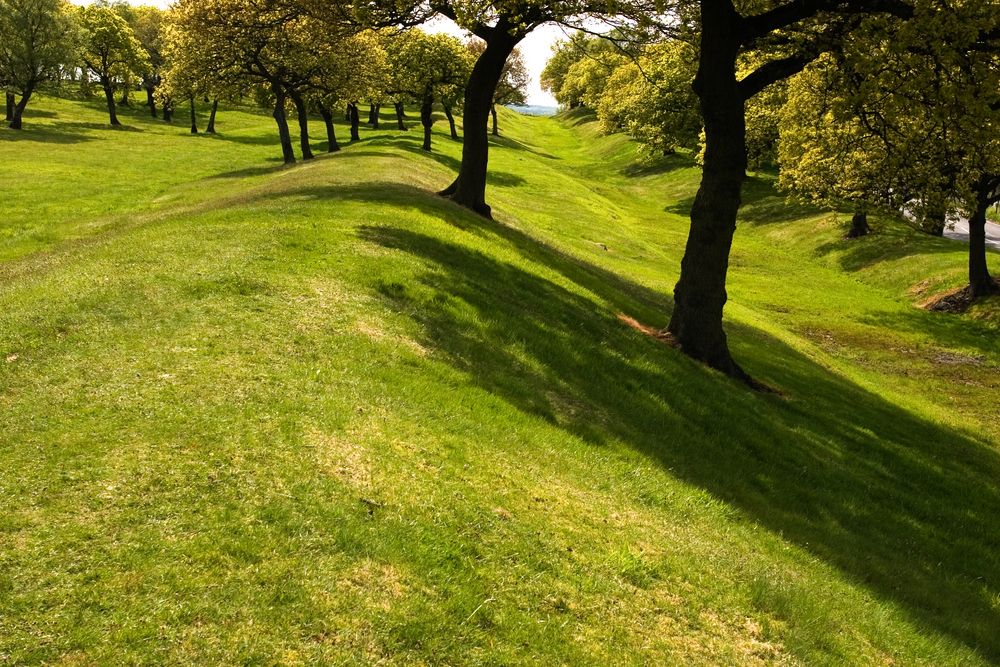
Setting off from Glasgow the torch will pass by the Antonine Wall the mark of the ancient Roman frontier in Scotland near the towns of Bearsden and Clydebank.
The wall was a turf rampart about 10 feet (3 meters high) fronted by a deep ditch; it stretched for 37 miles (60 kilometers) across the narrowest part of Great Britain, from modern Bo'ness, on the Firth of Forth, to Old Kilpatrick, on the River Clyde. Forts linked by a road called the Military Way were stationed along the wall about every 2 miles (3 km).
It was built by the Roman Army circa 142 AD on the orders of the Emperor Antoninus Pius, and then abandoned about two decades later when the Romans retreated back to Hadrian's Wall further south. While it was occupied, it was the most northerly frontier of the Roman Empire.
Distance slabs marked points along the wall and they and other important Roman artifacts have been uncovered along its length.
The wall was inscribed as a UNESCO World Heritage Site in 2008.
Loch Ness & Urquhart Castle Day 22
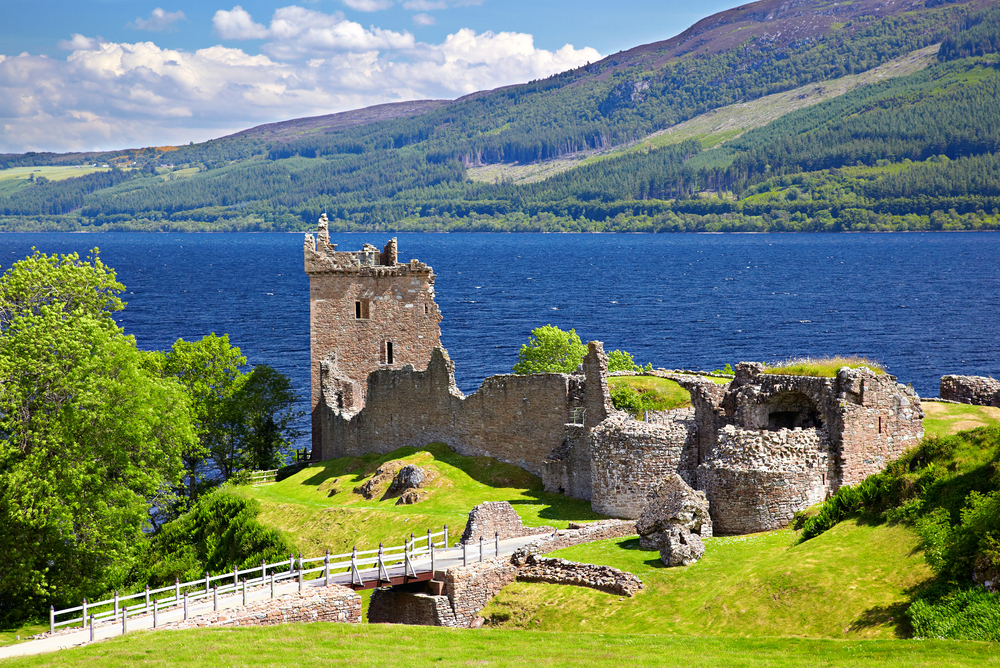
As the torch goes up into the Scottish Highlands, it will pass by the legendary Loch Ness, known for the mythical creature that supposedly lives there, the Loch Ness Monster.
Nessie was first reported in 1933, and since then many locals and tourists have claimed to see something in the cold, deep water. Plenty of dubious photographers and videos since then have purported to prove of Nessie's existence, but hard evidence of her existence has yet to surface.
But there are plenty of other sights along the shores of Loch Ness, the second-largest loch in Scotland, including Urquhart Castle.
Urquhart was once one of Scotland's largest castles, though now only its ruins remain. It had a 500-year history as a medieval fortress and witnessed many bloody conflicts. It figured prominently in the Scottish bid for independence in the 14th century and came under control of Robert the Bruce when he became King of Scots. The castle met its demise in 1692 as the last soldiers to leave it blew it up and it fell into ruins.
The views from the battlements of Grant Tower are supposed to be spectacular.
Skara Brae, Orkney Islands Day 23
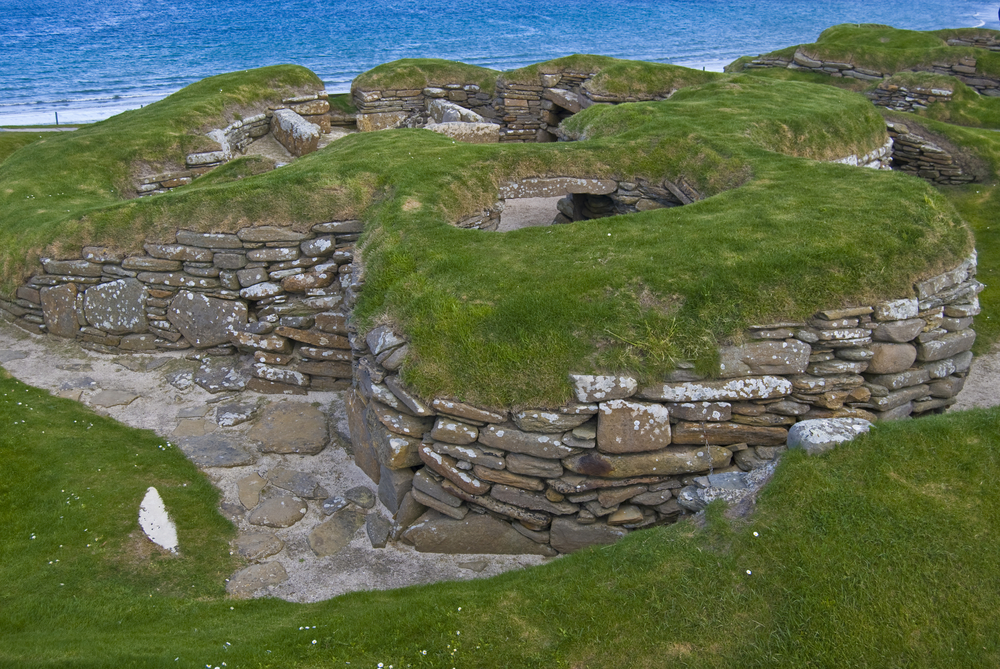
From the mainland of Scotland, the torch will travel to the country's offshore islands, starting with the Orkney Islands.
On the Bay of Skaill on the west of Mainland, the largest of the Orkney Islands, sits the Neolithic settlement of Skara Brae, the best preserved group of prehistoric houses in western Europe. The site dates from about 5,000 years ago, making it older than Stonehenge and the Great Pyramids.
The site was uncovered by a storm in 1850 and today is part of the Heart of Neolithic Orkney World Heritage Site. It features the remains of stone houses and an ancient midden, or trash heap. The houses were linked by covered passageways and each one consisted of a single room that had "fitted" stone furniture such as dressers and beds.
Excavations there have uncovered gaming dice, jewelry, tools and carved objected, which can be seen at the site's visitor center.
Life in the village appears to have ended around 2,500 B.C., though what happened to the settlement is unknown.
Other nearby sites on Orkney, such as Maeshowe Chambered Cairn, a Neolithic burial chamber, are also part of the World Heritage site. The Cairn also shows the influence of the Vikings on the islands: In the mid-12th century, they broke into the gravesite and carved graffiti runes.
Jarlshof Prehistoric and Norse Settlement, Shetland Islands Day 23
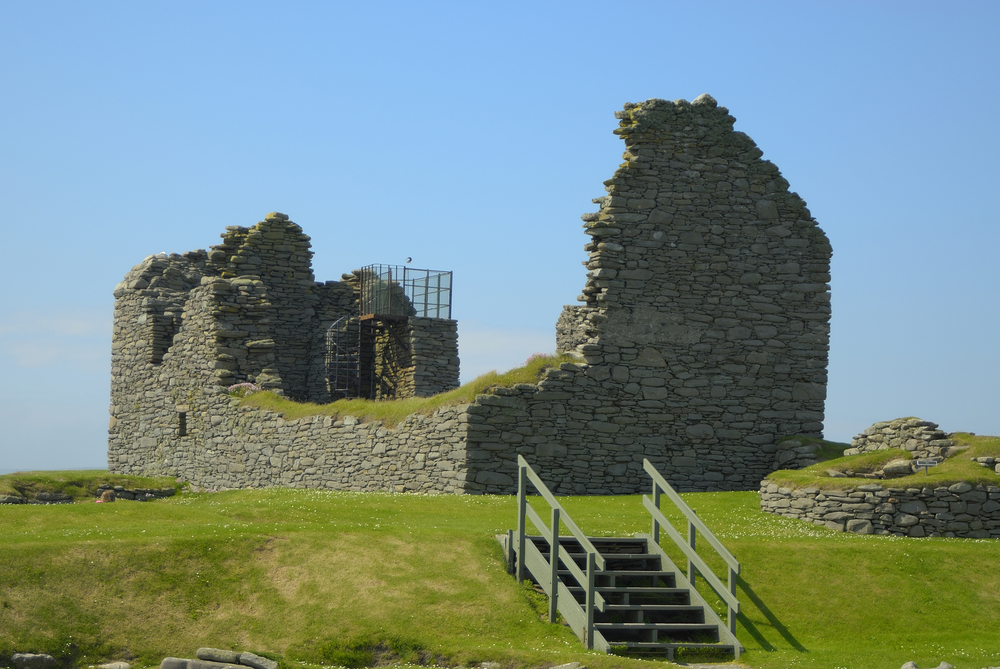
Some 50 miles (80 kilometers) to the northeast of the Orkney Islands, the torch will visit the Shetland Islands.
On the southern tip of Mainland, the largest of the islands, sits the Jarlshof Prehistoric and Norse Settlement, which has a record of more than 4,000 years of human settlement.
The site was also revealed by the action of a storm, just like Skara Brae, and contains late-Neolithic houses, a Bronze Age village, a Norse longhouse and a broch, a type of round, stone tower. So-called wheelhouses (because their roofs were supported by radial structures like the spokes in a wheel) are evidence of the occupation of the site by the Picts, Scotland's oldest indigenous people. Vikings from Norway settled there in the 9th century, and the Shetlands reflect a mix of Norse and Scottish cultural influences.
The Blackhouse, Arnol, Outer Hebrides Day 24

Before heading back to Great Britain, the torch will stop on the Isle of Lewis, part of the Outer Hebrides.
At the village of Arnol is The Blackhouse, a traditional, fully furnished, Lewis thatched house that was the residence of a Hebridean crofting family and is preserved almost exactly as they left it in 1966 when they moved out.
Arnol has been a settlement for more than 2,000 years, though the houses today have only been in their current position for about 100 years.
The blackhouse, following Hebridean tradition, was a residence for animals as well as people the added residents actually helped keep the house warm.
The peat fire in the house isn't allowed to go out to this day, and the smell is pungent at the site.
Whisky Trail Day 24

No trip through Scotland would be complete without a wee dram, and the Olympic torch will pass through one of the main whisky producing regions of Speyside, which lies along the River Spey.
The name whisky evolved from the Gaelic Uisghe Beatha, meaning "water of life," and the spirit takes on the characteristics of its local environment. The single malt whiskies produced in Speyside are known for being particularly smooth, a characteristic attributed to the clear spring water of the area and the crisp Highland air.
The Malt Whisky Trail takes visitors to the distilleries of Speyside, including Glenfiddich, The Glenlivet, and Strathisla (pictured above).
Get the world’s most fascinating discoveries delivered straight to your inbox.
Balmoral Castle Day 24
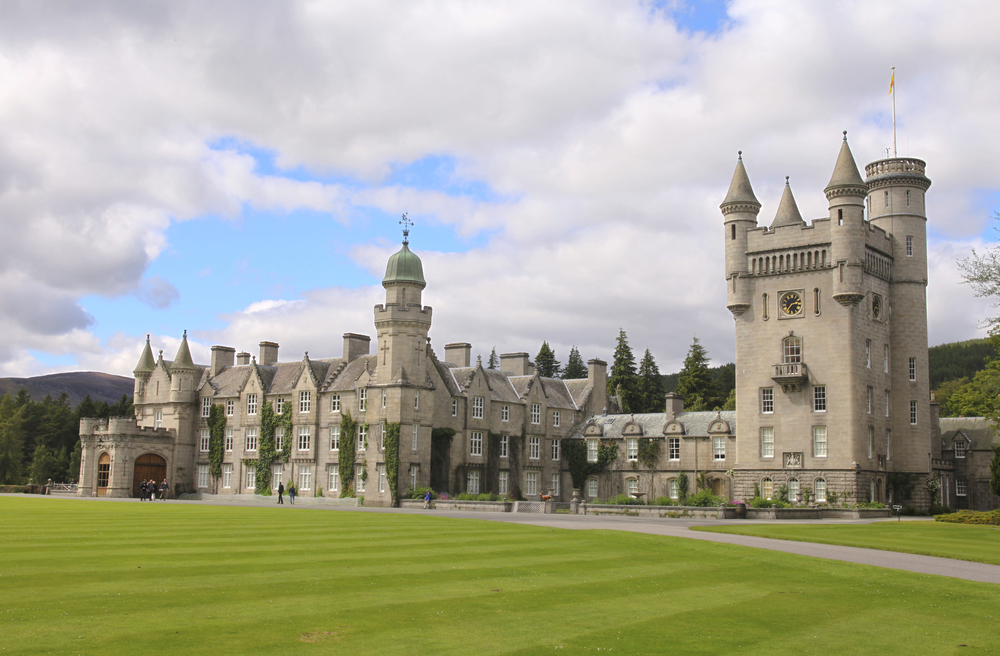
Balmoral Castle is famous for being the Scottish home of the Royal Family. The estate was purchased by Queen Victoria in 1852 and a new building was built under the supervision of her consort, Prince Albert. Queen Victoria laid the corner stone of the building on Sept. 28, 1853.
The estate includes grouse moor, seven Munros (mountains over 3,000 feet), more than 3,000 hectares of woodland, as well as pasture and farmland. Several areas of the estate have been designated as important to the conservation of local species, including black grouse and red deer. The entire estate lies within the boundaries of Cairngorms National Park, Britain's largest national park.
Visitors can tour the gardens and grounds and follow along marked walks that offer views of the castle. They can also see inside the castle at the ballroom and see some of the estate's history at the Carriage Hall.
The area near Balmoral is known as Royal Deeside (it lies along the River Dee), and it has villages and landmarks that have a special connection to Queen Victoria and the Royal Family. There are also much more ancient sights, such as prehistoric burial mounds, as well as outdoor activities from fishing to hiking.
RSS Discovery Day 25

At Dundee's port lies one of a relic of Britain's heyday of exploration, the RSS Discovery, the ship that took Robert Falcon Scott and Ernest Shackleton on their first, successful voyage to Antarctica in 1901-1903.
The ship was built in Dundee, a major whaling center, and was the last wooden three-masted ship to be built in Britain. It was specially built for its scientific mission: A magnetic observatory used to take magnetic measurements had no steel or iron around it for 30 feet (meters).
Scott was named leader of the expedition and he handpicked all 49 men and made sure the ship was packed with provisions, as no one knew if the men would be cut off in the icy continent.
Antarctica was sighted on Jan. 8, 1902, and the expedition did groundbreaking science, taking observations of auroras, seismic readings, and discovering 500 new species. Scott and Shackleton set out across the Antarctic frontier and traveled further south than anyone ever had, but they had to turn back as they were suffering from disease and their sled dogs were dying one-by-one. They reached the Discovery on Feb. 3, 1903.
Scott died in Antarctica on a subsequent expedition in 1912, after reaching the South Pole only to find that Norwegian Roald Amundsen had beaten him there to be the first man to reach the spot.
The RSS Discovery continued to be used, but was in a state of dilapidation by 1979. The ship was restored and brought back to Dundee in 1986, where she has sat ever since.
St. Andrews Day 26
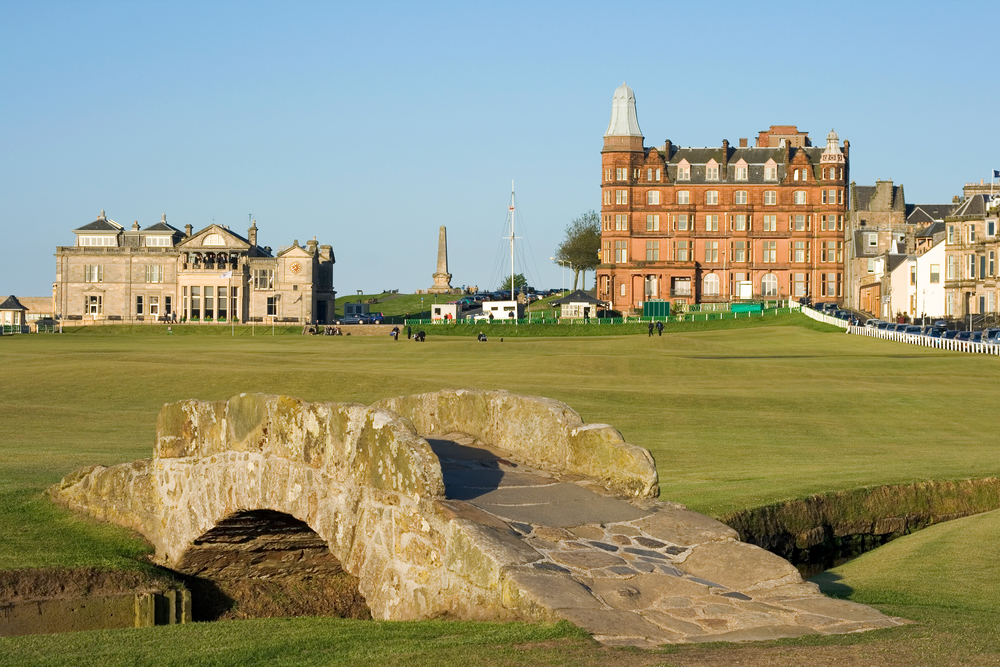
St. Andrews and golf are virtually synonymous, with the town heralded as the home of the sport.
The first recorded mention of golf there is from 1552 in a document bearing the seal of the Archbishop of St Andrews that grants townspeople the right to play golf on the Links, which were also used for other purposes. It is likely that golf was played there even earlier. The Royal and Ancient Golf Club of St Andrews established several of the rules still used in modern golf, and the 'Old Course' there is thought of as the original golf course. It initially had 22 holes, and it wasn't until the 18th century that the number was reduced to 18.
The town initially grew around the legend of it being the burial spot of the bones of St. Andrew the apostle. Pilgrims flocked there and the town grew up around the medieval cathedral and other religious structures. St. Andrews' became the center of Scotland's religious life. The flag of Scotland the saltire cross was the flag of St. Andrew. The remains of many these religious institutions can be seen around the city.
The town also hosts the University of St. Andrews, the oldest university in Scotland, founded in 1413. Some of the original colleges can be viewed there, as well as a thorn tree allegedly planted by Mary Queen of Scots.
Edinburgh Day 26
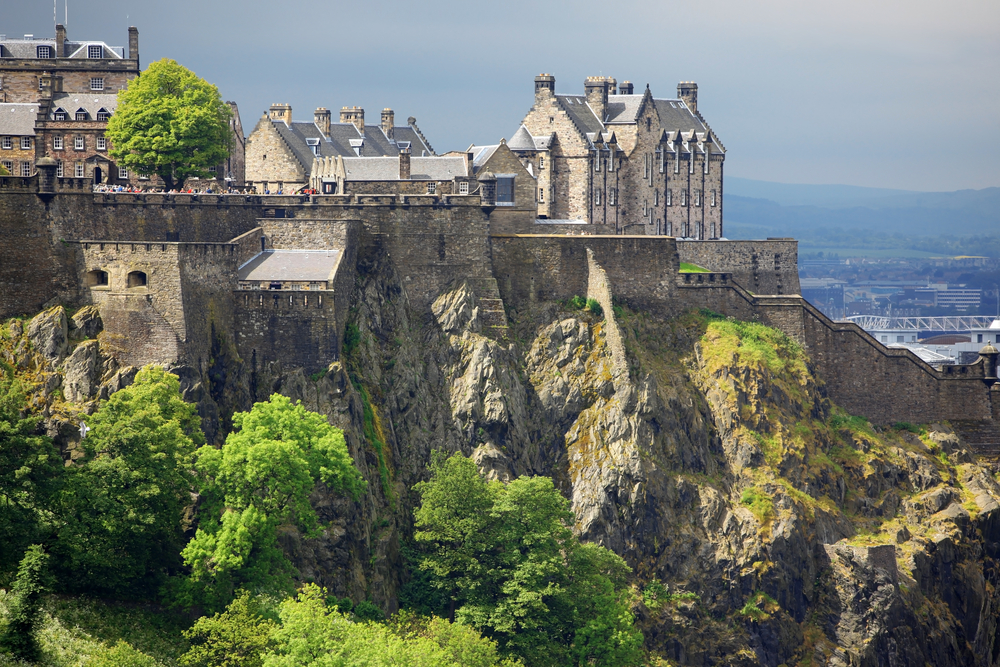
The political capital of Scotland, Edinburgh, is home to one of the country's biggest historic icons: Edinburgh Castle, which sits on rocky outcrop and dominates the skyline of the city.
The rock on which the castle sits was used as a stronghold for more than 3,000 years. The oldest building in Edinburgh, the 12th-century St Margaret's Chapel, can be found in the castle grounds. Margaret was the queen consort of King Malcolm III, and the chapel was built by her son, King David, who also establish the castle on the rock.
The castle grounds today also include the monumental great hall built by James IV and opened in 1511; the Stone of Destiny, Scotland's coronation stone; the nation's Crown Jewels (the Honours of Scotland); and Mons Meg, a huge medieval cannon that is among the oldest surviving ones in Europe.
The castle, along with much of the Old and New Towns of Edinburgh, are part of the Edinburgh World Heritage Site. The Old Town retains much of its medieval character, which can be seen as you walk down the Royal Mile from Edinburgh Castle to the Palace of Holyroodhouse. The new town was built during the Georgian Era and its orderly grid pattern contrasts with the winding medieval streets and closes of the Old Town.
A short walk from Holyroodhouse is Arthur's Seat, an imposing crag that was the site of a volcano some 340 million years ago (as was the outcrop on which Edinburgh Castle sits). The rocks were covered by other sediments for millions of years, then erosion took millions more years to uncover them until they reached their present state.

Andrea Thompson is an associate editor at Scientific American, where she covers sustainability, energy and the environment. Prior to that, she was a senior writer covering climate science at Climate Central and a reporter and editor at Live Science, where she primarily covered Earth science and the environment. She holds a graduate degree in science health and environmental reporting from New York University, as well as a bachelor of science and and masters of science in atmospheric chemistry from the Georgia Institute of Technology.


